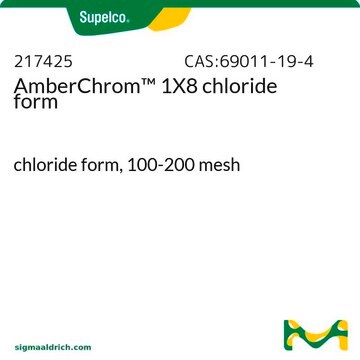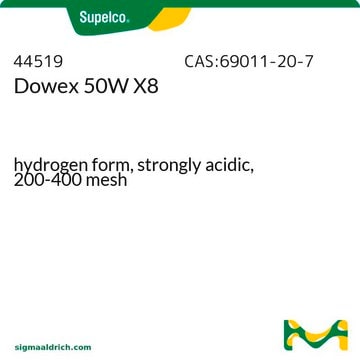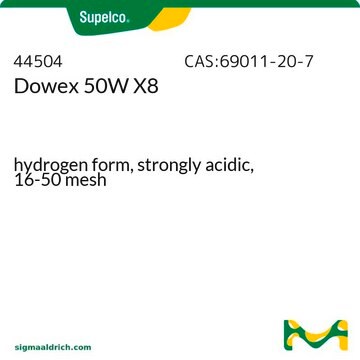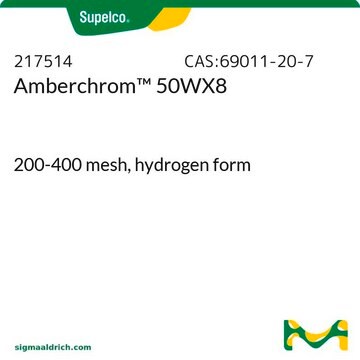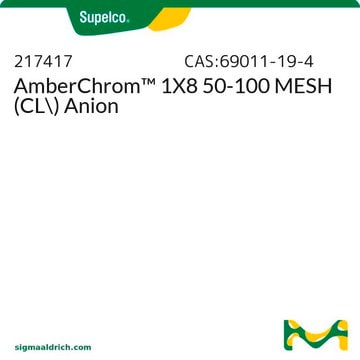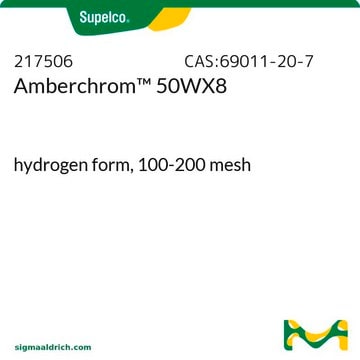44340
AmberChrom™ 1x8 chloride form
chloride form, strongly basic, 200-400 mesh
About This Item
Productos recomendados
Nivel de calidad
descripción
cross-linkage 8%
formulario
beads
Parámetros
66 °C OH- form max. temp.
humedad
39-45%
pérdida
~40% loss on drying, 110 °C
matriz
styrene-divinylbenzene (gel)
tamaño de partícula
200-400 mesh
pH operativo
0-14
capacidad
1.2 meq/mL by wetted bed volume
InChI
1S/C10H12.C10H10.C8H8.C3H9N/c2*1-3-9-7-5-6-8-10(9)4-2;1-2-8-6-4-3-5-7-8;1-4(2)3/h3,5-8H,1,4H2,2H3;3-8H,1-2H2;2-7H,1H2;1-3H3
Clave InChI
HADXLRSCRPYPJJ-UHFFFAOYSA-N
¿Está buscando productos similares? Visita Guía de comparación de productos
Categorías relacionadas
Aplicación
Información legal
Código de clase de almacenamiento
10 - Combustible liquids
Clase de riesgo para el agua (WGK)
WGK 2
Punto de inflamabilidad (°F)
Not applicable
Punto de inflamabilidad (°C)
Not applicable
Equipo de protección personal
Eyeshields, Gloves, type N95 (US)
Choose from one of the most recent versions:
¿Ya tiene este producto?
Encuentre la documentación para los productos que ha comprado recientemente en la Biblioteca de documentos.
Los clientes también vieron
Nuestro equipo de científicos tiene experiencia en todas las áreas de investigación: Ciencias de la vida, Ciencia de los materiales, Síntesis química, Cromatografía, Analítica y muchas otras.
Póngase en contacto con el Servicio técnico